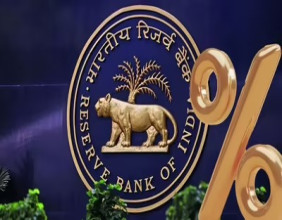Highlights:
Iron ore prices have dropped following renewed tariff tensions between global economies.
Key ASX-listed mining stocks such as BHP Group, Rio Tinto, and Fortescue Metals Group have declined.
Iron ore remains central to Australia's trade and economic outlook, closely tied to China.
Australia's mining sector remains a crucial component of the national economy, with iron ore playing a dominant role in both exports and economic stability. As a core element of the country's resource-based industries, iron ore contributes significantly to government revenues and the national trade balance. However, recent developments in global trade dynamics have intensified scrutiny on this sector, especially amid geopolitical uncertainties between major economies.
Iron Ore Prices Weaken Under Trade Disputes
Rising global trade tensions, particularly between the United States and China, have contributed to a downturn in iron ore pricing. The renewed focus on tariffs has added pressure to the steelmaking supply chain, with iron ore demand from China softening as a result. As China is the primary export destination for Australian iron ore, any disruption to this demand has immediate implications. The commodity has seen a marked decrease in value, reflecting broader concerns about international supply routes and industrial output.
Iron Ore’s Role in Australia's Trade and Currency Movements
Fluctuations in iron ore prices directly impact Australia’s economic indicators. As a primary export, iron ore influences the country's trade balance and plays a role in the valuation of the Australian dollar. A decline in the commodity’s price can lead to depreciation of the currency, especially when coupled with reduced international demand. The dependence on iron ore exports reinforces its status as a bellwether for broader economic performance.
Market Impact on Major Mining Companies
The effects of falling iron ore prices have been reflected in the ASX materials sector. Prominent mining companies have reported lower share prices following the latest economic developments. BHP Group (ASX:BHP), Rio Tinto (ASX:RIO), Mineral Resources (ASX:MIN), and Fortescue Metals Group (ASX:FMG) have all recorded notable declines in their market valuations. These companies are closely tied to global commodity pricing trends, and their financial performance is often influenced by fluctuations in export demand and geopolitical developments.
Geopolitical Factors Drive Sector Volatility
Tensions between global powers have introduced volatility into commodity markets, with tariffs and trade disputes creating uncertainty. As countries impose restrictive trade measures, supply chains are disrupted, and economic sentiment weakens. These macroeconomic shifts have a cascading effect on the mining sector, which remains sensitive to global industrial production trends. The broader impact extends beyond iron ore to other raw materials that support construction and manufacturing activities globally.
Outlook for the Iron Ore Market Remains Dependent on External Conditions
Movements in the iron ore market continue to reflect the influence of global economic conditions, policy changes, and international trade relations. The resolution or escalation of trade disputes could influence future demand, while ongoing shifts in industrial activity, particularly in China, remain a key factor in pricing trends. The mining sector remains alert to these developments as they unfold, given the implications for revenue, production planning, and export strategies.
Mining Sector Closely Watched Amid Shifting Economic Conditions
As trade relations evolve, market participants maintain close attention on developments affecting raw material flows. Iron ore, as a commodity of strategic economic importance, serves as a benchmark for the health of Australia's resource sector. With pricing under pressure, attention remains fixed on how major mining firms navigate the current landscape and respond to external economic forces shaping the global trade environment.



